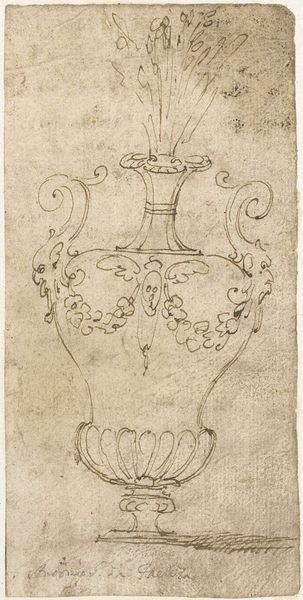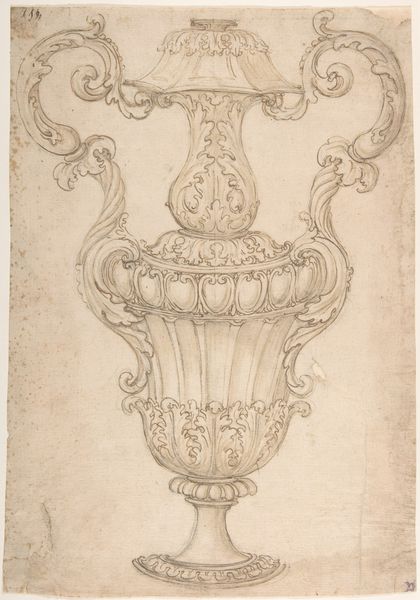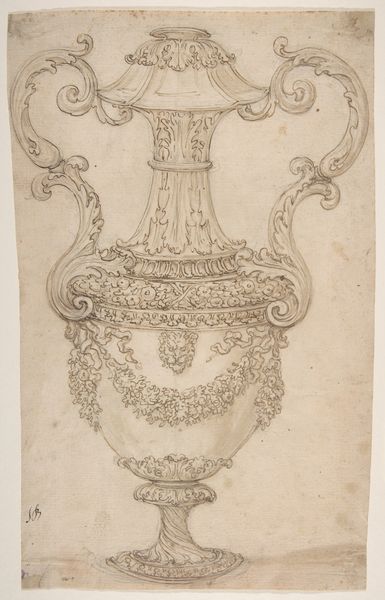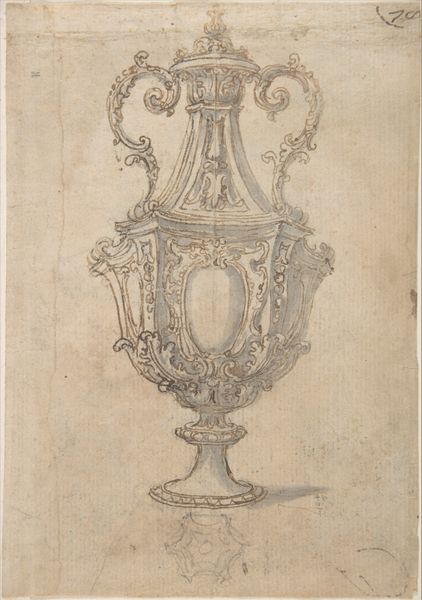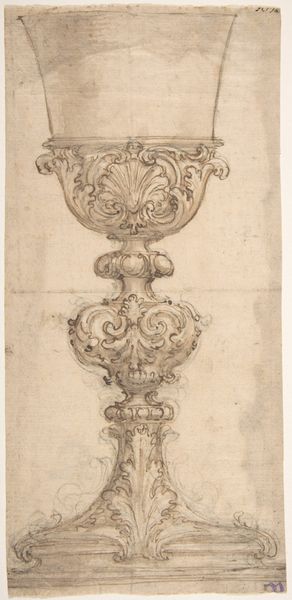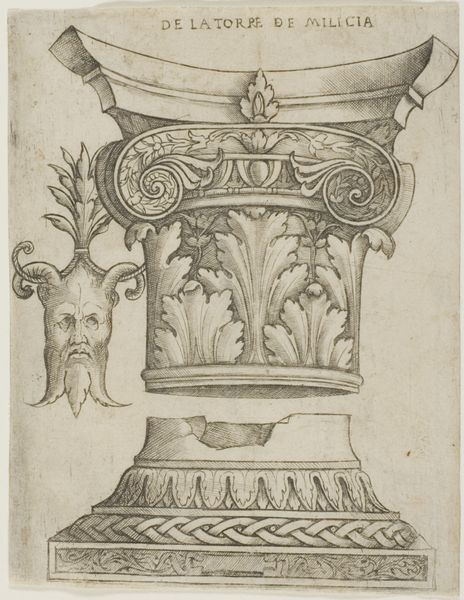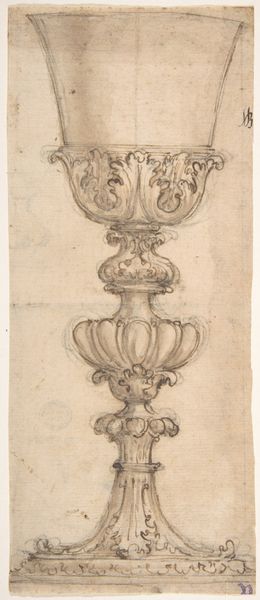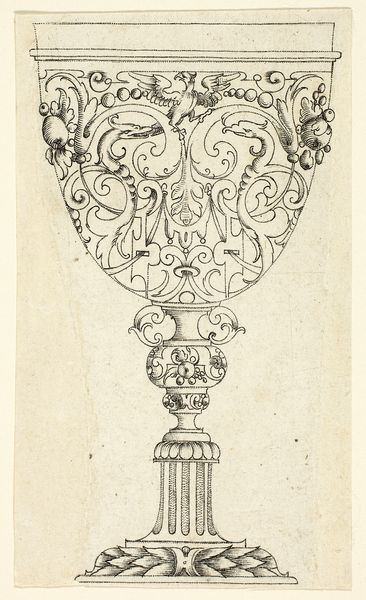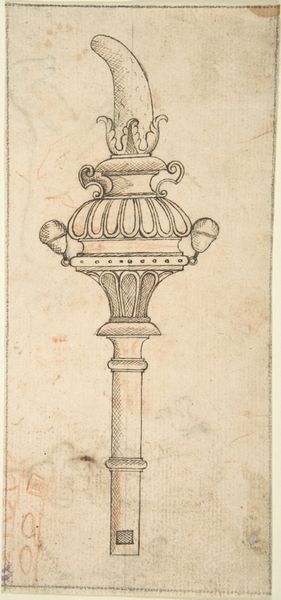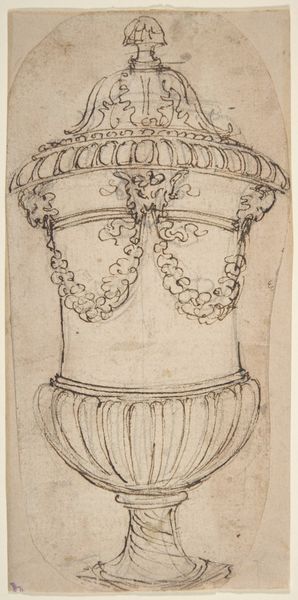
Dimensions: height 165 mm, width 86 mm
Copyright: Rijks Museum: Open Domain
Editor: Here we have Giovanni Battista Montano's pen and ink drawing, "Siervaas met mascarons," dating roughly from 1544 to 1621. It's a study for a vase, and what strikes me is the controlled yet florid quality of the lines, and how they build up to describe the form. What do you see in this piece from a formal perspective? Curator: This drawing offers a superb opportunity to analyze form and composition. Notice how the artist meticulously constructs the vase using a hierarchy of lines: bolder lines define the contour, while finer lines articulate interior details and decorative elements. We can observe a clear structure based on symmetry and balance, crucial elements in Baroque aesthetics. Editor: I see that. Could you elaborate on the balance you mentioned? Curator: Indeed. The vase is essentially bisected by a vertical axis, with the mascarons, handles, and floral arrangements mirrored on either side. This creates a sense of stability and order. However, Montano subtly disrupts this symmetry with slight variations in the linework and decorative motifs. The strategic imbalance introduces a visual tension, preventing the design from becoming static or predictable. Note the masterful rendering of depth using hatching and cross-hatching, adding another layer of complexity to the overall form. Editor: That makes sense. The varying line weights do give it dynamism despite the symmetry. What is your take on the Baroque ornamentation? Curator: From a Formalist perspective, it becomes a tool to analyze the artwork. How is space and light created through its form, material, and construction? Can semiotics reveal Baroque ideology, revealing what the function and importance were? By employing close visual analyses and theoretical engagement, one may determine its place and value. Editor: It’s interesting how a focus on form can unpack so much meaning and give access to cultural values, which in turn opens other lines of interpretation. Curator: Exactly! It’s the architecture of the artwork, if you will. Understanding this aspect of form can reveal more meaning.
Comments
No comments
Be the first to comment and join the conversation on the ultimate creative platform.
